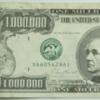Hello,
I am new to engraving and was wanting to ask you guys about etching Pyrex, Quartz, Acrylic, & Poly-carbonate. Do any of these materials have any big issues with high quality etching?
I have been calling several different laser engraver manufacturers such as Vision, Trotec, Full Spectrum, and ect.. None of them could really tell me about etching and different types of glass.
One more thing, What machine do you guys recommend? I can only afford the lower end models and I know you get what you pay for. My choice from what I have seen so far was a Trotec Speedy 100 with a Rotary. I don't know that I can do 10k though.
Are there any other good options out there for a production rotary engraving machine that are a little more affordable?
Thank you, any help is much appreciated.
Looking to etch something very similar to the size of a Pyrex Guitar Slide. http://www.stringsdirect.co.uk/image...441_medium.jpg




 Reply With Quote
Reply With Quote

 - fiber lasers
- fiber lasers



